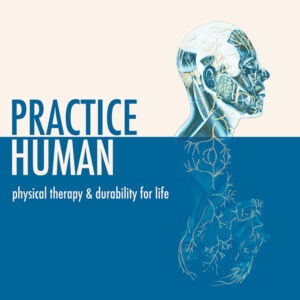People are not cars.

In my previous post, I discussed why manual therapy might not be as specific or effective as you think. If you missed it, take a look here. Now let’s shine a light on the ways manual therapy can positively impact progress in a course of PT rehabilitation.
A lot of people who show up to physical therapy think the purpose of manual therapy is to fix something mechanical: Reposition a joint that’s out of place. Correct asymmetries by moving body parts into optimal alignment. Break up adhesions between layers of soft tissue. Like dropping the car off at the mechanic, there’s a notion that we can drop off our bodies at the PT’s or chiropractor’s office to get all fixed up. Good as new, right? But people aren’t cars. If manual therapy has worked for you in the past, the reasons why it works might surprise you.
While some level of mechanical adjustment is possible, there is little evidence that interventions like joint manipulations and soft tissue mobilization are consistently reproducible, or as precise or effective as many people believe.
At best, manual corrections provide temporary pain relief. Unfortunately, in most cases, manual therapy alone offers little to no long-term benefits. Its application upholds a system of ongoing reliance on a healthcare provider, as opposed to active treatment tools that champion patient education and empowerment. A piece by Chad Cook, The Demonization of Manual Therapy, does a good job of examining the potential gains and pitfalls of manual therapy. Bottom line: If manual therapy is applied for early management of pain, progression to more active interventions should become the focus of treatment after the first 2-4 visits. Get pain under control and move on to exercise programs that patients can do on their own. Physio Greg Lehman said it best: “Calm sh*t down. Build sh*t up.”
So what if we shifted our mindset around manual therapy? What changes in the how and why if we view it as an entry point into more robust long-term solutions?
Here are two reasons for applying manual therapy that aren’t about mechanics:
1. Analgesic: Touch is a powerful tool for immediate pain relief. Ever banged your elbow on a table and immediately rubbed it for relief? Or found some comfort in massaging your neck and shoulders to ease the feeling of tightness after a long flight? Novel sensory input, such as that experienced by self-touch or touch from another person, introduces a non-painful stimulus that competes with familiar pain symptoms for your attention. Further, skilled therapeutic touch can decrease feelings of anxiety and hypervigilance that typically accompany pain symptoms.
When we’re able to tolerate a new sensation that’s different from our pain, it can make other unfamiliar sensations—such as exercise that promotes long-term positive adaptation—feel less scary and less painful to perform. Pain modulation through touch opens up a window of opportunity for transitioning into active movement that’s less fearful and guarded, and therefore, more comfortable and easy to perform.
2. Somatoperceptual: Manual therapy can help improve brain-body mapping for decreased pain and more coordinated movement. “Soma” means body. “Somatoperceptual” simply refers to one’s perception of their own body—bodily sensations, feelings of stretch, tightness, effort, release, how it feels to move. In an article by Geri et al. (2019) somatoperceptual touch is supported as a means for helping people reorganize mental representation of the body in the brain, discriminate between threatening and safe stimuli, and improve their sense of agency over the body.
Sensory feedback is a powerful tool for enhanced awareness of body condition and position. This is especially true for regions of the body like the back, spine, or shoulder blades; Areas we can’t visualize with our eyes. Through soft tissue mobilization and passive joint movement, the patient can develop a clearer understanding of the involved body region—its size, shape, muscle tone, sensation of tissues shortening and lengthening, pain-free range of motion—as preparation for active movement and exercise. Think of it as a “warm-up” for your brain-body connection.
The key is to use manual therapy as a way in. A starting point.
At Practice Human we believe in applying the minimum amount of passive treatment necessary to achieve the benefits outlined above. To “prime the canvas,” so to speak. Introduce sensory information that makes the experience of robust exercise interventions feel less like a threat, and more like good medicine. Most importantly, instead of relying on endless appointments for short lived results, our intention is to help people help themselves for the long haul.
Got a painful physical condition that’s been concerning you for a while? Come see us for a check-up (in person or online). Click here to schedule a free discovery call. Share your observations and goals. Ask questions. Find out if one-on-one physical therapy feels like a good fit.

Leave a Reply